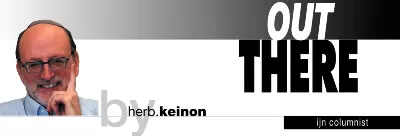By Rokhl Kafrissen
NEW YORK — “Fidler afn Dakh,” the Yiddish adaptation of “Fiddler on the Roof,” closed on Jan. 5 after a wildly successful 11-month run off-Broadway and an equally successful seven-month stint at the Museum of Jewish Heritage.
Shraga Friedman’s Yiddish translation of “Fiddler” is a miracle (of miracles) and it was a joy to see it — and Yiddish — celebrated not just in my little shtetl, but in the mainstream, too.
And yet, when I recently stepped onto a stage and spoke Yiddish, I was less appreciated and more iconicized. Let me explain.
I didn’t even know it happened until I read about it in a newspaper afterwards. I had done something quite out of the ordinary for my life: I took a gig as a performer at a “Cocktails and Klezmer” evening in Philadelphia. My job was to lead the audience through some Yiddish questions and unpack a few elements of Yiddish grammar. I was the educational content in between the booze and schmooze.
The next week, the event was reviewed in the Jewish Exponent. As Jesse Bernstein described it, I “read aloud with the crowd, building the sentence fragment by fragment, filling the room with guttural ‘ch’s’ and other vocal foundations of the language.”
It reminded me of the joke in Billy Crystal’s autobiographical book (and then show) 700 Sundays, in which he describes his family as “the kind of people who spoke mostly Yiddish, which is a combination of German and phlegm. This is a language of coughing and spitting; until I was 11, I wore a raincoat.”
If one had to locate Yiddish within the popular imagination, it would be found in the primeval Jewish throat.
The success of Yiddish “Fiddler” shows that Yiddish, from afar, can attain a certain symbolic stature in the public eye of the theatre class. But the intimate experience of Yiddish, up close and personal, still speaks to nothing so much as an estrangement between observer and object.
Yiddish is often characterized by its guttural “ch’s.” But Hebrew, with just as many guttural sounds, rarely seems to get tagged as such. As late as 1930, Zev Jabotinsky was arguing that the ideal Hebrew pronunciation would, “First of all . . . have to avoid the Yiddish ch, which is like the hoarse cough of someone with a throat disease.” Ouch.
Linguistic anthropologists Judith Irvine and Susan Gal describe those linguistic features which were believed to “depict or display a social group’s inherent nature or essence” as “iconic,” hence the process of “iconicization.”
When European anthropologists began describing the languages of southern Africa in the mid-19th century, they focused on the phonetically unfamiliar “click” sounds, describing them as similar to the sounds of animals, or rocks striking each other.
Clicks were a linguistic feature which “indexed” the peoples who used them. Drawing on the prevailing racial-scientific logic of the day, European linguists concluded that the more clicks a language contained, the more “degraded” or “subhuman” was the speaker.
I don’t think Billy Crystal, or Jesse Bernstein for that matter, are expressing a personal hatred or contempt when they index Yiddish speakers by the depth of their gutturals or the volume of their phlegm. In fact, I’m pretty confident they’re expressing their feelings of affection and intimacy, using the ordinary vocabulary of Jewish life.
The problem is that those feelings of personal affection and intimacy are in tension with other received ideas about the relative worth of the language.
Without even knowing it, many have absorbed a set of negative beliefs about Yiddish. If we were to unravel those negative beliefs to their origins, I believe we would find that they lie in the very foundations of Western academia, in which Europe’s Jews were depicted as a deformed, corrupted Other.
The first scholars to study Yiddish were German humanists, who believed that the language was a “degenerate” ancestor of the evolved German they spoke. The beliefs of these scholars were clothed in the new language of science and scholarship, which made their truth all the more undeniable.
But if those negative beliefs about Yiddish are so strong, what explains the extraordinary success of the Yiddish “Fiddler,” or “Yiddler”? (Aside from the fact that it’s a beautifully executed, fresh production.)
One theater observer wrote recently:
“It seems to unlock deep memories for Jewish viewers . . . audience members told me that words were jumping out at them that they hadn’t heard since they were little kids . . . A few also told me that it was encouraging to hear this language, which has been so diminished by the Holocaust and diaspora assimilation, spoken in a giant theater in New York City.”
I think there’s quite a bit of truth within those explanations. I would suggest that there’s another, even more powerful process at work. “Fiddler” is one of the most beloved and well known texts in American culture.
It is so well known that by attending the show in Yiddish, even non-Yiddish speakers can have the experience of direct access to a language that would otherwise be closed off to them.
“Yiddler” bestows the feeling of bilingualism, without the risks of investing in formal language study. It is deeply, uniquely, accessible to everyone, not just a small circle of Yiddish lovers.
As much as I want to see more Yiddish language shows land off-Broadway, it’s unlikely that the smashing success of “Yiddler” will translate to similar levels of success for other Yiddish theater, or that there will be a sudden increase in American Jews signing up to learn Yiddish.
The resources and infrastructure just aren’t there for large numbers of people to begin learning the language.
Moreover, American Jews are still Americans, and monolingualism is a powerful American reality, one much stronger than the time and effort it takes to learn a second language.
It’s exhausting to have to justify to everyone why you are spending your precious time learning what is supposedly a “dead” language.
The search for roots and longing to connect still has to compete with our internalized distrust of the very things we are seeking.
I was only half-surprised recently to see a “just for fun” social media posting addressed to fellow Jews, asking us to share the “old country” names we thought sounded the most awful or embarrassing. My heart broke at the thought of Tevye ending up on this person’s list.
No quantity of off-Broadway tickets sold can undo the effect of centuries of unexamined Jew-hatred.

















